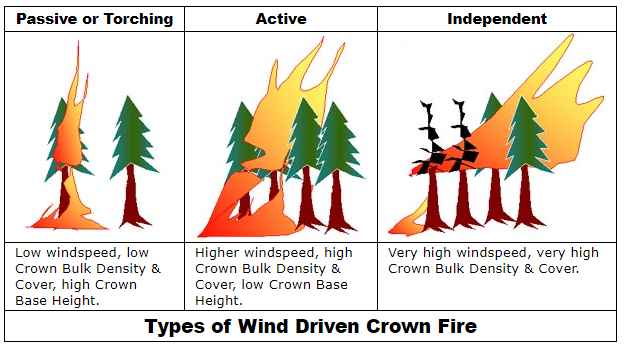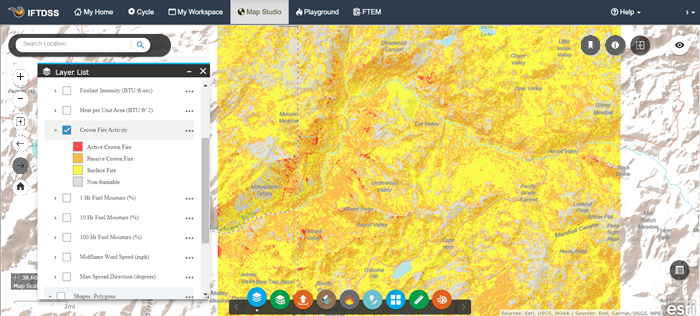Crown fire activity describes fire activity in the forest or shrub canopy. Characterized as surface fire, passive crown fire (torching), active crown fire or non-burnable.
-
Surface Fire: Fire that burns loose debris on the surface, which includes dead branches, leaves, and low vegetation.
-
Passive Crown Fire: A fire in the crowns of trees in which trees or groups of trees torch, ignited by the passing front of the fire. The torching trees reinforce the spread rate, but these fires are not basically different from surface fires.
-
Active Crown Fire: A fire in which a solid flame develops in the crowns of trees, but the surface and crown phases advance as a linked unit dependent on each other.
-
Non-burnable: Portions of the landscape fuels that will not support combustion. Generally associated with bodies of water or non-vegetated areas of the landscape.

